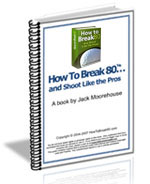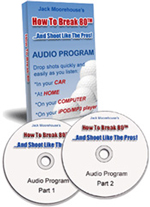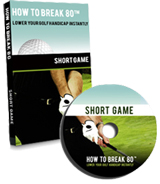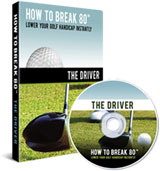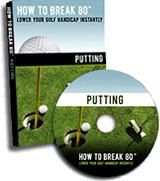
The Natural Swing: The Backswing By Jack Moorehouse This is the third in a series of articles on the Natural Swing. The previous articles provided golf tips on the swing's fundamental principles and its starting form. Here, we examine the backswing, providing a brief golf lesson on what proponents of the Natural Swing call the "loading motion." The Natural Swing emphasizes that the most basic of all principals is that golf involves a swinging motion directed toward a target. Unlike the traditional swing taught by today's pros, the Natural Swing is a whole body motion. It emphasizes swinging through the ball. not swinging at it to hit it. Instead, we swing a unit—our hands, arms, shoulders, and club—through the ball toward our target. If the ball is in the right place, we'll hit it because it is in the swing's natural path. The Natural Swing's starting form, the subject of our second golf lesson, gives you a chance to execute the swing properly. Since the golf swing is one motion, the starting form is a sort of lead-in. It sets a tone of harmony and ease. And it focuses on two key ideas: balance and proportion. Balance is the key to the Natural Swing. Everything you do should be done with an eye toward maintaining and promoting balance during the swing. Proponents of the Natural Swing call the backswing "loading." The subject of our third golf lesson, this concept represents a key point of differentiation from the traditional swing. Unlike that, which divides the activity into discrete parts, the Natural Swing sees the swing as one motion—a loading and an unloading of energy, a seamless moving from one phase to another. The term loading, according to the Naturalists, implies energy and commitment, as well as something vigorous and energizing. Gathering and Storing Energy The loading motion is less of a rotation than an unloading, so some 25 percent of your weight remains on the front foot. In other words, while loading you rotate about 90 degrees, while unloading you rotate almost a full 180 degrees. After a while, you will sense when you've loaded your swing completely, thanks to your sense of balance and your awareness of your target—the two triggers to the unloading phases. The successful transfer of weight, while staying in balance, accumulates energy. But how do you know when the effort is complete? Loading is complete when about 75 percent of your weight is on your back foot. If you were to shift 100 percent of your weight on your back foot, you'd lose your balance, and thus violate the most basic principal of the Natural Swing. Maintain balance, as I tell all those who attend my golf instruction sessions, is the key to all swings.
Target Awareness is also Key The intensity of your target awareness contributes to your sense of when you have completed your loading motion. It operates in conjunction with your sensitivity to balance. Since you're aware of the target, you'll sense when it is time to start moving toward it, that is, to begin unloading. This happens sometime toward the end of the loading motion, which is why Naturalists say that loading and unloading are part of the same motion. Good Footwork is Essential Your hands are also essential to the Natural Swing. They should remain "passive." That doesn't mean your hands are inactive. It just that they don't consciously do anything to influence the swing's motion. Your hands will be as active as they need to be, if you let them move along with the rest of your body. Conclusion Jack Moorehouse is the author of the best-selling book "How To Break 80 And Shoot Like The Pros." He is NOT a golf pro, rather a working man that has helped thousands of golfers from all seven continents lower their handicap immediately. He has a free weekly newsletter with the latest golf tips, golf lessons and golf instruction. |
|

